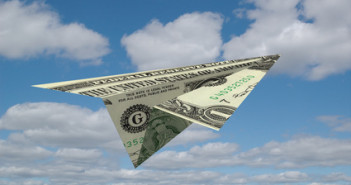On Tuesday, I wrote an article saying that the Euro was too high at 1.38 against the US dollar. Many analysts disagreed with some spouting out 1.40 is inevitable. Don’t want to blow my own trumpet but I will, it is currently hovering just above 1.35 and looking like it is going to continue this sharp decline.
However, 300 points off the level from Tuesday is quite a fall in such a short duration. FX markets are extremely volatile and when many positions are being traded on > 100:1 margin, those gains and losses are magnified greatly.
Recent European data has been weak with growth figures, unemployment and PMI figures weaker than expected over the last few weeks. The recent fall in the Euro against the US dollar can be attributed to weak economic data, political concern in Europe, very low inflation raising deflation concerns and also to the less dovish statement from the FOMC on Wednesday.
The wording of the statement was interpreted as that tapering may start a little earlier than previously expected, but I still do not expect this to start before 2014. When tapering does start, this will act as a catalyst in driving the US dollar higher especially against emerging market currencies which have been major beneficiaries of quantitative easing. Some emerging market currencies such as the Indian Rupee have had a remarkable rally in the last two months as it has rallied from more than Rs 69 at the end of August to the current level of Rs 61.
However, this rally may be reversed soon as the Indian Rupee and other emerging market currencies such as the Brazilian Real have run a little ahead of themselves as their economies are still very weak with government deficits and inflation very worrying. The Real has appreciated approximately 10% from the end of August when it was 2.45 against the US dollar to the current level of 2.23.
The US dollar has had a very weak couple of months against many currencies but there seems to be a reversal in the last few sessions as dollar buyers have appeared believing that the greenback has fallen too much. With the European economy still in much disarray and unemployment amongst under 30 year olds more than 50% in some of the southern European countries, the Euro is still very high against the US dollar and this does not help exports. The strength of the Euro is also a major hindrance to the tourism industry which is a significant part of the economies of Greece, Portugal and Spain. Consumer items are at least 25% more expensive in Europe than in the US. From a purchasing power point of view the Euro needs to fall further.
Further reading: EUR/USD getting close to critical uptrend support – bounce or breakdown?
